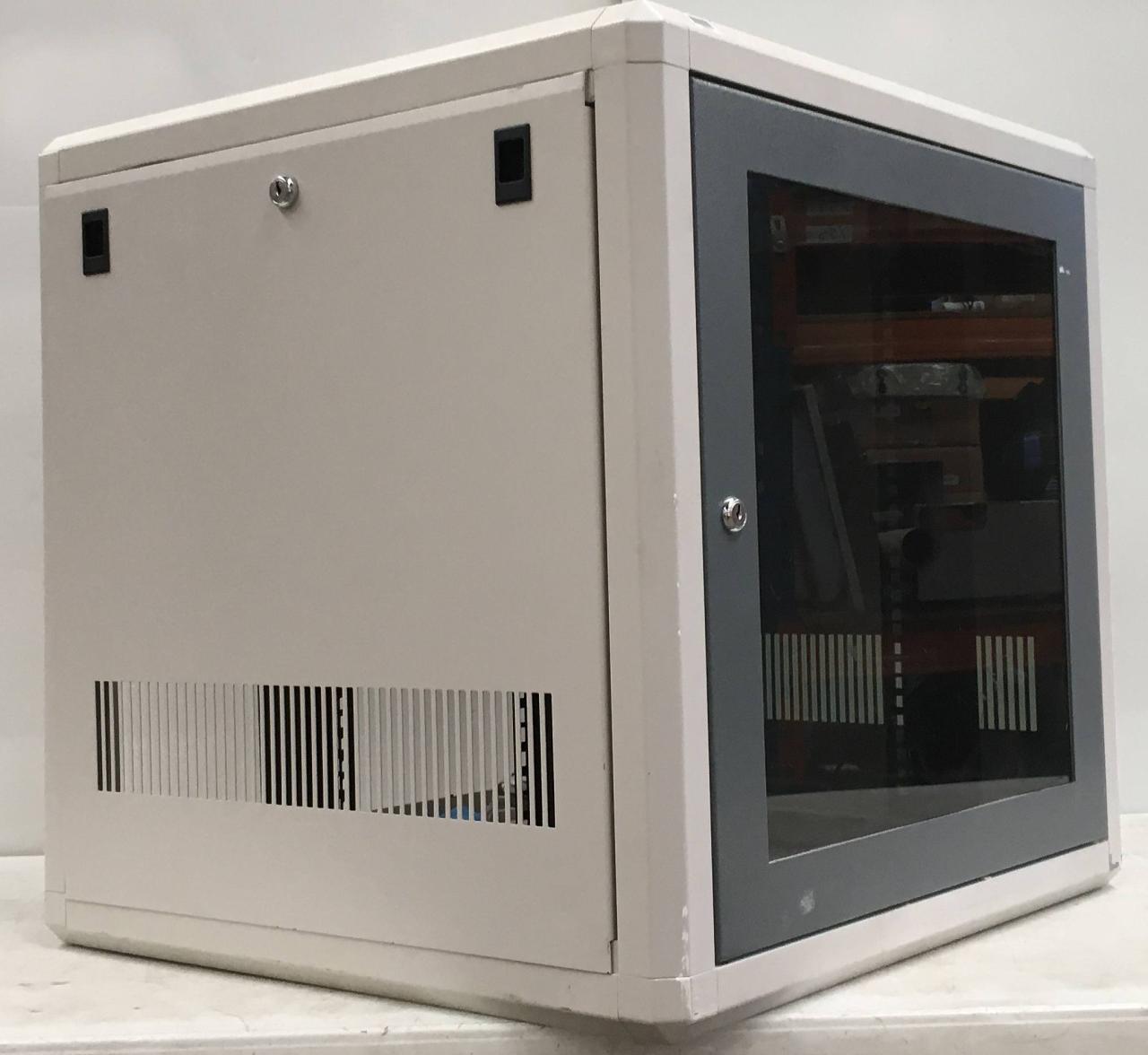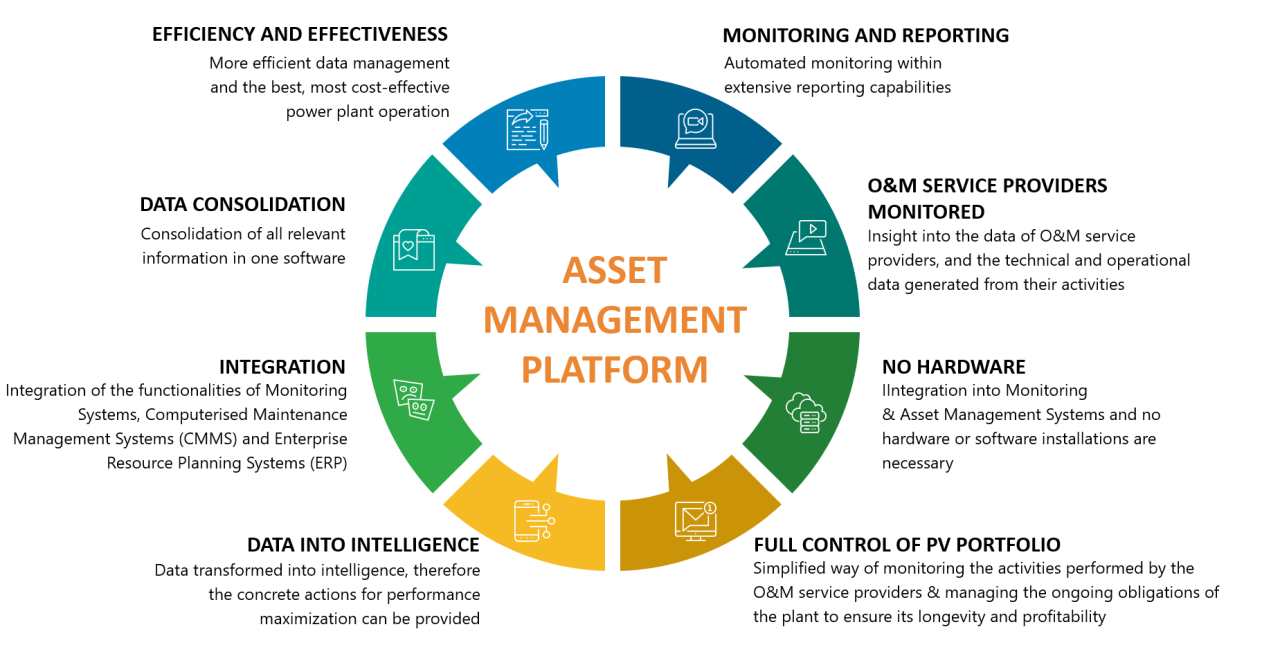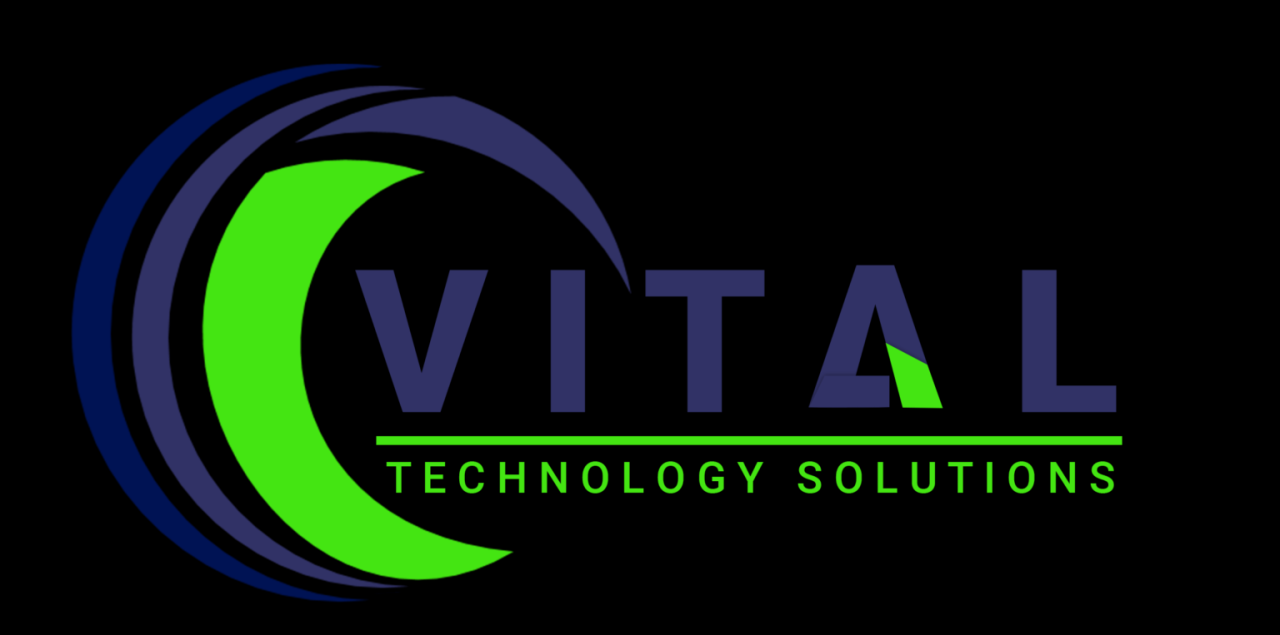Rack Technologies: Powering Data Centers
Rack technologies are the backbone of modern data centers and server rooms, providing the essential infrastructure to house and manage critical IT equipment. From the humble beginnings of simple metal […]

Rack technologies are the backbone of modern data centers and server rooms, providing the essential infrastructure to house and manage critical IT equipment. From the humble beginnings of simple metal frames, rack technologies have evolved into sophisticated systems that optimize space, airflow, and power distribution.
This evolution has been driven by the ever-increasing demand for computing power, storage capacity, and network connectivity. As technology advances, so too do the demands placed on rack systems. Today, racks are designed to accommodate a wide range of equipment, including servers, networking devices, storage systems, and even specialized applications like high-performance computing (HPC) and artificial intelligence (AI).
Rack Technologies
Rack technologies are essential components in data centers and server rooms, providing a standardized and efficient way to house, manage, and connect IT equipment. They play a crucial role in ensuring the smooth operation, scalability, and reliability of critical IT infrastructure.
Evolution of Rack Technologies
Rack technologies have undergone significant evolution, driven by the ever-increasing demands of modern IT systems. Key advancements and trends include:
- Increased Density: Racks have become denser, accommodating more servers and equipment in a smaller footprint, driven by the need for greater computing power and storage capacity within limited space.
- Modular Design: Modern racks are often modular, allowing for customization and easy expansion to meet changing needs. This flexibility enables businesses to adapt their infrastructure to accommodate new technologies and evolving workloads.
- Integrated Management: Racks are increasingly integrated with management systems, providing real-time monitoring of environmental conditions, power consumption, and equipment health. This enhances operational efficiency and proactive maintenance.
- Sustainability: As environmental concerns grow, rack technologies are incorporating features like energy-efficient power distribution units (PDUs) and optimized cooling systems to reduce energy consumption and carbon footprint.
Types of Racks
Different types of racks cater to various applications and requirements:
- Standard Racks: These are the most common type, typically 19 inches wide and 42U (units) high. They are versatile and suitable for a wide range of IT equipment, from servers and networking devices to storage systems.
- Open Frame Racks: These racks have an open frame construction, providing greater flexibility for mounting and accessing equipment. They are often used in environments where airflow and accessibility are critical.
- Wall-Mount Racks: These racks are designed to be mounted on walls, saving floor space. They are ideal for smaller deployments or in areas where space is limited.
- Cabinet Racks: These are enclosed racks that provide greater security and environmental control. They are commonly used in data centers and server rooms where equipment needs to be protected from dust, humidity, and unauthorized access.
Advantages of Using Rack Technologies
The use of rack technologies offers several advantages:
- Improved Organization: Racks provide a structured and organized environment for IT equipment, simplifying management and maintenance.
- Enhanced Airflow: Properly designed racks promote efficient airflow, preventing overheating and ensuring optimal performance of equipment.
- Increased Scalability: Modular racks allow for easy expansion as IT needs grow, enabling businesses to scale their infrastructure seamlessly.
- Improved Security: Enclosed racks provide physical security for equipment, protecting it from unauthorized access and environmental hazards.
- Reduced Costs: Rack technologies can help reduce energy consumption and maintenance costs, leading to long-term cost savings.
Rack Components and Features

Racks are the fundamental building blocks of data centers and server rooms, providing a structured and organized environment for housing and managing IT equipment. They offer numerous advantages, including improved airflow, enhanced cable management, and efficient space utilization. To understand the functionality of racks, it’s crucial to delve into their essential components and features.
Rack Rails
Rack rails are vertical metal strips that run along the sides of the rack. They serve as the primary mounting points for equipment, providing a standardized system for secure installation. Rails come in various configurations, including adjustable, fixed, and combination types. Adjustable rails offer flexibility in positioning equipment at different heights, while fixed rails provide a rigid and secure mounting solution. Combination rails combine the benefits of both adjustable and fixed rails, allowing for customized equipment placement.
Rack Cages
Rack cages are enclosures designed to house multiple servers or other IT equipment within a rack. They provide physical security and protection for sensitive equipment, preventing unauthorized access and mitigating potential damage. Rack cages are typically made of steel or aluminum and feature locking doors or panels for enhanced security.
Mounting Brackets
Mounting brackets are essential components that facilitate the secure attachment of IT equipment to rack rails. They come in various sizes and configurations to accommodate different equipment types, such as servers, switches, routers, and storage devices. Mounting brackets typically feature slots or holes that align with the mounting points on the equipment, ensuring a stable and secure installation.
Ventilation and Airflow Management
Proper ventilation and airflow management are crucial for maintaining optimal operating temperatures within the rack and preventing equipment overheating. Racks are designed with ventilation holes or slots that allow for air circulation. Fans or other cooling devices can be installed to enhance airflow and dissipate heat generated by the equipment.
Power Distribution Units (PDUs), Rack technologies
Power distribution units (PDUs) are essential components that distribute power to multiple pieces of equipment within the rack. They typically provide multiple outlets, allowing for the connection of various devices. PDUs can be either basic or advanced, with features such as power monitoring, remote control, and surge protection.
Cable Management Systems
Cable management systems are designed to organize and route cables within the rack, ensuring a clean and efficient environment. They include various components such as cable trays, cable ties, and patch panels. Effective cable management improves airflow, reduces clutter, and simplifies troubleshooting.
Rack Standards and Certifications

Rack standards and certifications are crucial for ensuring compatibility, interoperability, and safety within data centers and other IT environments. These standards and certifications provide guidelines for rack dimensions, mounting methods, and safety requirements, which are essential for the smooth operation and reliability of IT equipment.
EIA-310-D and IEC 60297-3-101 Standards
The EIA-310-D and IEC 60297-3-101 standards define the physical dimensions and mounting specifications for racks, ensuring that equipment from different manufacturers can be installed and operated seamlessly within a rack. These standards cover aspects like:
- Rack width: 19 inches (482.6 mm)
- Rack depth: Varies based on rack type, ranging from 24 inches (609.6 mm) to 48 inches (1219.2 mm)
- Rack height: Measured in rack units (RU), with each RU representing 1.75 inches (44.45 mm)
- Mounting holes: Standardized hole patterns for mounting equipment
- Cable management: Guidelines for routing and securing cables
These standards promote compatibility and interoperability by ensuring that equipment from different manufacturers can be installed and operated within the same rack without issues.
UL, CSA, and CE Certifications
Certifications like UL, CSA, and CE are essential for verifying the safety and performance of racks. These certifications indicate that the rack has met specific safety and performance standards, ensuring:
- Electrical safety: Proper grounding, wire gauge, and circuit protection
- Mechanical stability: Ability to withstand the weight of equipment and environmental stresses
- Fire resistance: Materials and construction meet fire safety requirements
- Environmental compliance: Adherence to regulations related to emissions and energy efficiency
Comparison of Rack Standards
| Standard | Description | Impact |
|---|---|---|
| EIA-310-D | Defines physical dimensions and mounting specifications for racks in the United States and Canada. | Ensures compatibility of equipment from different manufacturers within the same rack. |
| IEC 60297-3-101 | International standard that aligns with EIA-310-D but also covers additional aspects like cable management and environmental considerations. | Promotes global interoperability and supports compliance with international regulations. |
“Adhering to rack standards and certifications ensures the safety and reliability of IT equipment within data centers and other critical environments.”
Rack Deployment and Configuration
Rack deployment and configuration involve a systematic process of planning, installing, and managing equipment within a rack infrastructure. This process ensures optimal performance, scalability, and reliability for IT systems.
Factors to Consider When Choosing Rack Size, Capacity, and Configuration
The choice of rack size, capacity, and configuration is crucial for efficient and effective rack deployment. Several factors should be considered during this stage:
- Equipment Size and Weight: Determine the size and weight of the equipment to be installed. Choose a rack that can accommodate the dimensions and weight of the devices. Consider the depth, width, and height of the rack to ensure proper fit and ventilation.
- Power and Cooling Requirements: Evaluate the power and cooling needs of the equipment. Select a rack with sufficient power outlets, cooling capacity, and ventilation to prevent overheating and ensure proper operation.
- Scalability and Future Growth: Anticipate future growth and expansion needs. Choose a rack with sufficient capacity to accommodate additional equipment in the future.
- Budget: Set a budget for the rack and its components. Consider different rack options and their associated costs, including power distribution units (PDUs), cable management systems, and other accessories.
- Environmental Considerations: Evaluate the environmental conditions where the rack will be deployed. Consider factors such as temperature, humidity, and dust levels to ensure the rack’s suitability and longevity.
Best Practices for Organizing Equipment Within Racks
Organizing equipment within racks effectively is essential for maintainability, accessibility, and airflow. Here are some best practices:
- Use Cable Management Systems: Employ cable management systems, such as cable trays, straps, and ties, to organize cables and prevent tangling. This enhances airflow and reduces clutter.
- Prioritize Airflow: Ensure proper airflow by leaving adequate space between equipment and the rack sides. Use blanking panels to cover empty spaces and improve airflow efficiency.
- Group Similar Equipment: Group similar types of equipment together, such as servers, network devices, or storage systems. This simplifies management and troubleshooting.
- Label Equipment and Cables: Label equipment and cables clearly for easy identification and maintenance. This reduces confusion and saves time during troubleshooting.
- Use Mounting Rails: Utilize mounting rails to secure equipment within the rack. This ensures stability and prevents accidental dislodging.
Rack Management and Monitoring
Effective rack management and monitoring are crucial for ensuring the optimal performance, reliability, and longevity of your IT infrastructure. By keeping a close eye on key environmental and operational factors, you can proactively address potential issues before they escalate into costly downtime or equipment failure.
Environmental Monitoring
Environmental factors, such as temperature, humidity, and airflow, can significantly impact the performance and lifespan of your IT equipment.
- Temperature: Excessive heat can lead to component overheating, reduced performance, and even premature failure. Ideally, the temperature within a rack should be maintained between 68°F and 77°F (20°C and 25°C).
- Humidity: High humidity can contribute to corrosion and condensation, which can damage electrical components. The recommended humidity range is between 40% and 60%.
- Airflow: Proper airflow is essential for dissipating heat and preventing hot spots within the rack. Ensure that there is adequate clearance around equipment and that air vents are not obstructed.
Power Consumption Monitoring
Monitoring power consumption is essential for optimizing energy efficiency and identifying potential power-related issues.
- Energy Efficiency: By tracking power usage, you can identify devices that are consuming excessive power and implement strategies to reduce consumption.
- Overload Prevention: Monitoring power consumption helps prevent overloading circuits and potential power outages.
- Capacity Planning: Understanding power usage patterns can inform capacity planning decisions, ensuring that your infrastructure can accommodate future growth.
Monitoring Methods
Several methods are available for monitoring racks, each with its own advantages and limitations.
- Sensors: Sensors are used to collect real-time data on environmental conditions (temperature, humidity, airflow) and power consumption. They can be wired or wireless, and data can be displayed locally or remotely.
- Software: Rack monitoring software provides a centralized platform for managing and analyzing data from sensors, providing alerts and reports.
- Remote Access: Remote access capabilities allow you to monitor your racks from anywhere with an internet connection. This enables proactive troubleshooting and intervention in case of issues.
Optimizing Rack Utilization
Effective rack utilization is crucial for maximizing space and resources.
- Consolidation: Consolidating multiple physical servers onto virtual machines can reduce the number of physical servers required, freeing up rack space and reducing power consumption.
- Density Optimization: Choosing high-density equipment, such as blade servers or dense storage arrays, can increase the number of devices that can be accommodated within a rack.
- Cable Management: Proper cable management ensures efficient airflow, prevents tripping hazards, and makes it easier to access equipment.
Minimizing Downtime
Proactive monitoring and maintenance can significantly reduce downtime.
- Predictive Maintenance: Monitoring data can identify potential issues before they cause downtime. For example, temperature sensors can alert you to overheating components, allowing you to address the issue before it leads to failure.
- Redundancy: Implementing redundancy in power supplies, network connections, and other critical components can minimize the impact of failures.
- Disaster Recovery Planning: Having a disaster recovery plan in place can help you quickly restore operations in the event of a major outage.
Future Trends in Rack Technologies
The world of data centers is constantly evolving, driven by technological advancements and changing user demands. Rack technologies are at the forefront of this evolution, adapting to accommodate new workloads, optimize performance, and enhance efficiency. This section explores the emerging trends shaping the future of rack design and management, highlighting the impact of virtualization, cloud computing, and edge computing, as well as the growing importance of sustainable and energy-efficient solutions.
Impact of Virtualization, Cloud Computing, and Edge Computing on Rack Deployments
Virtualization, cloud computing, and edge computing are transforming how IT infrastructure is designed and deployed. These technologies are driving a shift towards more flexible, scalable, and distributed computing environments, significantly impacting rack deployments.
- Increased Density and Scalability: Virtualization allows for the consolidation of multiple physical servers onto a single physical server, resulting in increased server density within racks. This translates to a smaller footprint and reduced energy consumption. Cloud computing further amplifies this trend, enabling businesses to scale their IT resources on demand, seamlessly adjusting rack deployments to meet fluctuating workloads.
- Micro Data Centers and Edge Computing: Edge computing necessitates the deployment of smaller, localized data centers closer to end-users, often utilizing micro data centers housed within racks. These edge deployments cater to real-time applications, reducing latency and enhancing user experience.
- Modular and Flexible Rack Designs: The need for adaptability and scalability in response to changing IT requirements has led to the development of modular rack designs. These designs allow for easy customization and expansion, facilitating the integration of different components and technologies as needed.
Sustainable and Energy-Efficient Rack Solutions
Sustainability and energy efficiency are increasingly critical considerations in data center design and operation. Rack technologies are playing a vital role in reducing environmental impact and optimizing energy consumption.
- Energy-Efficient Cooling Systems: Advanced cooling technologies, such as liquid cooling and air-cooled systems with variable speed fans, are being integrated into rack designs. These systems optimize cooling efficiency, minimizing energy consumption while maintaining optimal operating temperatures for servers and other equipment.
- Power Management and Monitoring: Intelligent power distribution units (PDUs) with power monitoring and management capabilities enable real-time tracking of energy consumption within racks. This data provides valuable insights for optimizing power usage and identifying areas for improvement.
- Sustainable Materials and Manufacturing: There is a growing focus on using sustainable materials in rack manufacturing, minimizing environmental impact throughout the product lifecycle. Recycled materials, energy-efficient manufacturing processes, and responsible sourcing practices are becoming increasingly common in the rack industry.
Last Point: Rack Technologies

Understanding rack technologies is crucial for anyone involved in designing, deploying, or managing data centers. By carefully selecting the right rack components, implementing best practices for organization and airflow, and utilizing advanced monitoring tools, organizations can ensure the reliability, efficiency, and scalability of their IT infrastructure. As technology continues to evolve, rack technologies will continue to play a vital role in supporting the growth and innovation of the digital world.
Rack technologies are crucial for organizing and managing equipment in a variety of settings, from server rooms to audio-visual studios. A key component in any audio setup is a reliable receiver, like the listen technologies receiver , which ensures optimal sound quality and connectivity.
By integrating such receivers into your rack system, you can create a streamlined and efficient audio infrastructure.





